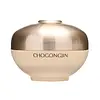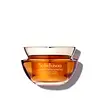What's inside
What's inside
 Key Ingredients
Key Ingredients

 Benefits
Benefits

 Concerns
Concerns

 Ingredients Side-by-side
Ingredients Side-by-side

Water
Skin ConditioningDipropylene Glycol
HumectantDicaprylyl Ether
EmollientTocopherol
AntioxidantGlycerin
HumectantGlyceryl Stearate
EmollientBetaine
HumectantHydrogenated Polydecene
EmollientDiisostearyl Malate
EmollientPentaerythrityl Tetraethylhexanoate
EmollientVinyldimethicone
Niacinamide
SmoothingCaprylic/Capric Triglyceride
MaskingCetearyl Alcohol
EmollientPolyglyceryl-3 Distearate
EmulsifyingGlyceryl Stearate Citrate
EmollientPolyglyceryl-6 Distearate
EmulsifyingJojoba Esters
EmollientCetyl Alcohol
EmollientPolyglyceryl-3 Beeswax
EmulsifyingDimethiconol
EmollientLimnanthes Alba Seed Oil
Skin ConditioningTrehalose
HumectantPolyacrylate-13
Hydrogenated Polyisobutene
EmollientPolyglyceryl-10 Laurate
Skin ConditioningEthylhexyl Palmitate
EmollientSorbitan Isostearate
Emulsifying1,2-Hexanediol
Skin ConditioningHydroxyethyl Acrylate/Sodium Acryloyldimethyl Taurate Copolymer
Emulsion StabilisingSodium Stearoyl Glutamate
CleansingButylene Glycol
HumectantHydrogenated Lecithin
EmulsifyingFicus Carica Fruit Extract
HumectantCentella Asiatica Extract
CleansingCeramide NP
Skin ConditioningBehenyl Alcohol
EmollientHydroxyacetophenone
AntioxidantParfum
MaskingMethylpropanediol
SolventVelvet Extract
HumectantCornus Officinalis Fruit Extract
Skin ConditioningThymus Vulgaris Extract
PerfumingAngelica Gigas Root Extract
Skin ConditioningAlcohol
AntimicrobialPhellodendron Amurense Bark Extract
Skin ConditioningEthylhexylglycerin
Skin ConditioningElaeis Guineensis Oil
EmollientXanthan Gum
EmulsifyingAdenosine
Skin ConditioningDisodium EDTA
Coccinia Indica Fruit Extract
Skin ConditioningEclipta Prostrata Extract
Skin ConditioningCodonopsis Lanceolata Root Extract
Skin ConditioningSodium Hyaluronate
HumectantRoyal Jelly Extract
Skin ConditioningGold
Cosmetic ColorantWater, Dipropylene Glycol, Dicaprylyl Ether, Tocopherol, Glycerin, Glyceryl Stearate, Betaine, Hydrogenated Polydecene, Diisostearyl Malate, Pentaerythrityl Tetraethylhexanoate, Vinyldimethicone, Niacinamide, Caprylic/Capric Triglyceride, Cetearyl Alcohol, Polyglyceryl-3 Distearate, Glyceryl Stearate Citrate, Polyglyceryl-6 Distearate, Jojoba Esters, Cetyl Alcohol, Polyglyceryl-3 Beeswax, Dimethiconol, Limnanthes Alba Seed Oil, Trehalose, Polyacrylate-13, Hydrogenated Polyisobutene, Polyglyceryl-10 Laurate, Ethylhexyl Palmitate, Sorbitan Isostearate, 1,2-Hexanediol, Hydroxyethyl Acrylate/Sodium Acryloyldimethyl Taurate Copolymer, Sodium Stearoyl Glutamate, Butylene Glycol, Hydrogenated Lecithin, Ficus Carica Fruit Extract, Centella Asiatica Extract, Ceramide NP, Behenyl Alcohol, Hydroxyacetophenone, Parfum, Methylpropanediol, Velvet Extract, Cornus Officinalis Fruit Extract, Thymus Vulgaris Extract, Angelica Gigas Root Extract, Alcohol, Phellodendron Amurense Bark Extract, Ethylhexylglycerin, Elaeis Guineensis Oil, Xanthan Gum, Adenosine, Disodium EDTA, Coccinia Indica Fruit Extract, Eclipta Prostrata Extract, Codonopsis Lanceolata Root Extract, Sodium Hyaluronate, Royal Jelly Extract, Gold
Water
Skin ConditioningButylene Glycol
HumectantDimethicone
EmollientGlycerin
HumectantTriethylhexanoin
MaskingSqualane
EmollientHydrogenated Polyisobutene
Emollient1,2-Hexanediol
Skin ConditioningVinyl Dimethicone/Methicone Silsesquioxane Crosspolymer
Hydroxyethyl Acrylate/Sodium Acryloyldimethyl Taurate Copolymer
Emulsion StabilisingCetearyl Olivate
Cetearyl Alcohol
EmollientMethoxy PEG-114/Polyepsilon Caprolactone
BufferingSorbitan Olivate
EmulsifyingGlyceryl Stearate
EmollientStearic Acid
CleansingPalmitic Acid
EmollientArachidyl Alcohol
EmollientBehenyl Alcohol
EmollientParfum
MaskingHydrolyzed Ginseng Saponins
Skin ConditioningGlyceryl Caprylate
EmollientArachidyl Glucoside
EmulsifyingPhenoxyethanol
PreservativeSorbitan Isostearate
EmulsifyingPolysorbate 60
EmulsifyingEthylhexylglycerin
Skin ConditioningDisodium EDTA
Sodium Stearoyl Glutamate
CleansingLinalool
PerfumingPanax Ginseng Root Extract
EmollientDextrin
AbsorbentTheobroma Cacao Extract
Skin ConditioningSodium Chloride
MaskingHoney
HumectantLimonene
PerfumingHydrogenated Lecithin
EmulsifyingRehmannia Glutinosa Root Extract
Skin ConditioningPanax Ginseng Flower Extract
AntioxidantPaeonia Lactiflora Root Extract
Skin ConditioningLilium Candidum Bulb Extract
Skin ConditioningPolygonatum Odoratum Rhizome Extract
Skin ConditioningMyristic Acid
CleansingArachidic Acid
CleansingGlucose
HumectantNelumbo Nucifera Flower Extract
Skin ConditioningPhytosphingosine
Skin ConditioningSodium Polyaspartate
HumectantCaprylyl Glycol
EmollientTocopherol
AntioxidantSodium Methyl Stearoyl Taurate
CleansingAcetyl Heptapeptide-4
HumectantAcetyl Hexapeptide-8
HumectantSodium Hydroxide
BufferingAcetyl Octapeptide-3
HumectantWater, Butylene Glycol, Dimethicone, Glycerin, Triethylhexanoin, Squalane, Hydrogenated Polyisobutene, 1,2-Hexanediol, Vinyl Dimethicone/Methicone Silsesquioxane Crosspolymer, Hydroxyethyl Acrylate/Sodium Acryloyldimethyl Taurate Copolymer, Cetearyl Olivate, Cetearyl Alcohol, Methoxy PEG-114/Polyepsilon Caprolactone, Sorbitan Olivate, Glyceryl Stearate, Stearic Acid, Palmitic Acid, Arachidyl Alcohol, Behenyl Alcohol, Parfum, Hydrolyzed Ginseng Saponins, Glyceryl Caprylate, Arachidyl Glucoside, Phenoxyethanol, Sorbitan Isostearate, Polysorbate 60, Ethylhexylglycerin, Disodium EDTA, Sodium Stearoyl Glutamate, Linalool, Panax Ginseng Root Extract, Dextrin, Theobroma Cacao Extract, Sodium Chloride, Honey, Limonene, Hydrogenated Lecithin, Rehmannia Glutinosa Root Extract, Panax Ginseng Flower Extract, Paeonia Lactiflora Root Extract, Lilium Candidum Bulb Extract, Polygonatum Odoratum Rhizome Extract, Myristic Acid, Arachidic Acid, Glucose, Nelumbo Nucifera Flower Extract, Phytosphingosine, Sodium Polyaspartate, Caprylyl Glycol, Tocopherol, Sodium Methyl Stearoyl Taurate, Acetyl Heptapeptide-4, Acetyl Hexapeptide-8, Sodium Hydroxide, Acetyl Octapeptide-3
Ingredients Explained
These ingredients are found in both products.
Ingredients higher up in an ingredient list are typically present in a larger amount.
1,2-Hexanediol is a synthetic liquid and another multi-functional powerhouse.
It is a:
- Humectant, drawing moisture into the skin
- Emollient, helping to soften skin
- Solvent, dispersing and stabilizing formulas
- Preservative booster, enhancing the antimicrobial activity of other preservatives
Behenyl Alcohol is a type of fatty alcohol (these are different from the drying, solvent alcohols).
Fatty Alcohols have hydrating properties and are most often used as an emollient or to thicken a product. They are usually derived from natural fats and oils; behenyl alcohol is derived from the fats of vegetable oils.
Emollients help keep your skin soft and hydrated by creating a film that traps moisture in.
In 2000, Behenyl Alcohol was approved by the US as medicine to reduce the duration of cold sores.
Learn more about Behenyl AlcoholButylene Glycol (or BG) is used within cosmetic products for a few different reasons:
Overall, Butylene Glycol is a safe and well-rounded ingredient that works well with other ingredients.
Though this ingredient works well with most skin types, some people with sensitive skin may experience a reaction such as allergic rashes, closed comedones, or itchiness.
Learn more about Butylene GlycolCetearyl alcohol is a mixture of two fatty alcohols: cetyl alcohol and stearyl alcohol. It is mainly used as an emulsifier. Emulsifiers help prevent the separation of oils and products. Due to its composition, it can also be used to thicken a product or help create foam.
Cetearyl alcohol is an emollient. Emollients help soothe and hydrate the skin by trapping moisture.
Studies show Cetearyl alcohol is non-toxic and non-irritating. The FDA allows products labeled "alcohol-free" to have fatty alcohols.
This ingredient is usually derived from plant oils such as palm, vegetable, or coconut oils. There is debate on whether this ingredient will cause acne.
Due to the fatty acid base, this ingredient may not be Malassezia folliculitis safe.
Learn more about Cetearyl AlcoholDisodium EDTA plays a role in making products more stable by aiding other preservatives.
It is a chelating agent, meaning it neutralizes metal ions that may be found in a product.
Disodium EDTA is a salt of edetic acid and is found to be safe in cosmetic ingredients.
Learn more about Disodium EDTAEthylhexylglycerin (we can't pronounce this either) is commonly used as a preservative and skin softener. It is derived from glyceryl.
You might see Ethylhexylglycerin often paired with other preservatives such as phenoxyethanol. Ethylhexylglycerin has been found to increase the effectiveness of these other preservatives.
Glycerin is already naturally found in your skin. It helps moisturize and protect your skin.
A study from 2016 found glycerin to be more effective as a humectant than AHAs and hyaluronic acid.
As a humectant, it helps the skin stay hydrated by pulling moisture to your skin. The low molecular weight of glycerin allows it to pull moisture into the deeper layers of your skin.
Hydrated skin improves your skin barrier; Your skin barrier helps protect against irritants and bacteria.
Glycerin has also been found to have antimicrobial and antiviral properties. Due to these properties, glycerin is often used in wound and burn treatments.
In cosmetics, glycerin is usually derived from plants such as soybean or palm. However, it can also be sourced from animals, such as tallow or animal fat.
This ingredient is organic, colorless, odorless, and non-toxic.
Glycerin is the name for this ingredient in American English. British English uses Glycerol/Glycerine.
Learn more about GlycerinGlyceryl Stearate is a mix of glycerin and stearic acid.
It is used to stabilize the mixing of water and oil ingredients. By preventing these ingredients from separating, it can help elongate shelf life. It can also help thicken the product's texture.
As an emollient, it helps soften skin and supports barrier-replenishing ingredients.
In cosmetics, Glyceryl Stearate is often made from vegetable oils or synthetically produced.
This ingredient may not be fungal-acne safe
Fun fact: The human body also creates Glyceryl Stearate naturally.
Learn more about Glyceryl StearateHydrogenated Lecithin is created from the hydrogenation of lecithin (a group of phospholipids). Hydrogenation is a chemical reaction between hydrogen and another element.
This ingredient is an emollient and emulsifier. As an emollient, it helps soften skin by trapping moisture within. As an emulsifier, it prevents oil and water ingredients from separating.
Hydrogenated Polyisobutene is a synthetic polymer. Polymers are compounds with high molecular weight. Hydrogenated Polyisobutene is an emollient and texture enhancer.
In one study, Hydrogenated Polyisobutene showed better skin hydration levels than Caprylic/Capric Triglyceride. As an emollient, it helps keep your skin soft and hydrated by trapping moisture in.
Hydrogenated Polyisobutene is often used as a mineral oil replacement.
Learn more about Hydrogenated PolyisobuteneThis is a synthetic polymer. It helps improve the texture of products by adding thickness and gel-like feel.
It is also an emulsifer, meaning it prevents ingredients such as oil and water from separating. It also helps evenly disperse other ingredients.
Parfum is a catch-all term for an ingredient or more that is used to give a scent to products.
Also called "fragrance", this ingredient can be a blend of hundreds of chemicals or plant oils. This means every product with "fragrance" or "parfum" in the ingredients list is a different mixture.
For instance, Habanolide is a proprietary trade name for a specific aroma chemical. When used as a fragrance ingredient in cosmetics, most aroma chemicals fall under the broad labeling category of “FRAGRANCE” or “PARFUM” according to EU and US regulations.
The term 'parfum' or 'fragrance' is not regulated in many countries. In many cases, it is up to the brand to define this term.
For instance, many brands choose to label themselves as "fragrance-free" because they are not using synthetic fragrances. However, their products may still contain ingredients such as essential oils that are considered a fragrance by INCI standards.
One example is Calendula flower extract. Calendula is an essential oil that still imparts a scent or 'fragrance'.
Depending on the blend, the ingredients in the mixture can cause allergies and sensitivities on the skin. Some ingredients that are known EU allergens include linalool and citronellol.
Parfum can also be used to mask or cover an unpleasant scent.
The bottom line is: not all fragrances/parfum/ingredients are created equally. If you are worried about fragrances, we recommend taking a closer look at an ingredient. And of course, we always recommend speaking with a professional.
Learn more about ParfumSodium Stearoyl Glutamate is an emulsifier and helps condition the skin. It is amino acid-based.
In higher amounts, it may act as a cleansing agent.
Sorbitan Isostearate is an emulsifer and cleaning agent. It is created from isostearic acid and sorbitol.
As an emulsifier, Sorbitan Isostearate prevents oils and water from separating.
Due to its isostearic acid base, it may not be safe for Malassezia or fungal acne.
Learn more about Sorbitan IsostearateTocopherol (also known as Vitamin E) is a common antioxidant used to help protect the skin from free-radicals and strengthen the skin barrier. It's also fat soluble - this means our skin is great at absorbing it.
Vitamin E also helps keep your natural skin lipids healthy. Your lipid skin barrier naturally consists of lipids, ceramides, and fatty acids. Vitamin E offers extra protection for your skin’s lipid barrier, keeping your skin healthy and nourished.
Another benefit is a bit of UV protection. Vitamin E helps reduce the damage caused by UVB rays. (It should not replace your sunscreen). Combining it with Vitamin C can decrease sunburned cells and hyperpigmentation after UV exposure.
You might have noticed Vitamin E + C often paired together. This is because it is great at stabilizing Vitamin C. Using the two together helps increase the effectiveness of both ingredients.
There are often claims that Vitamin E can reduce/prevent scarring, but these claims haven't been confirmed by scientific research.
Learn more about TocopherolWater. It's the most common cosmetic ingredient of all. You'll usually see it at the top of ingredient lists, meaning that it makes up the largest part of the product.
So why is it so popular? Water most often acts as a solvent - this means that it helps dissolve other ingredients into the formulation.
You'll also recognize water as that liquid we all need to stay alive. If you see this, drink a glass of water. Stay hydrated!
Learn more about Water